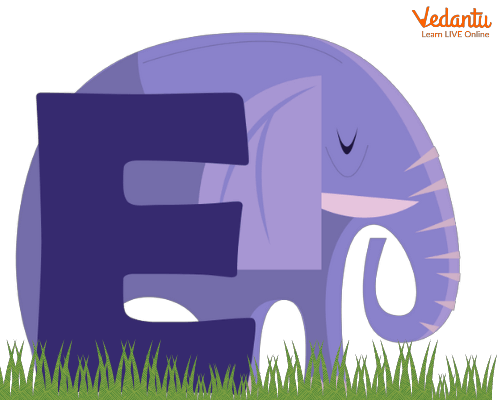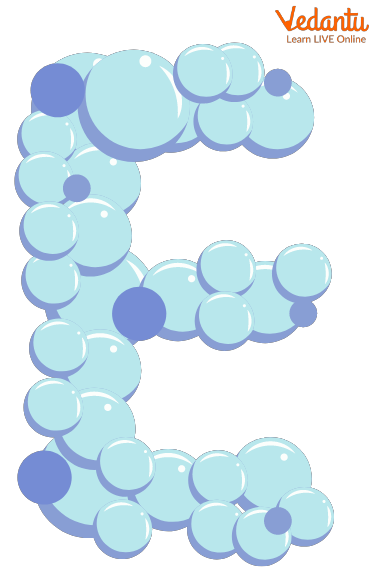Letter ‘E’ Story

Introducing the Letter ‘E”
E, or e, is the fifth letter in the English alphabet and the second vowel letter in the ISO (the International Organization for Standardization) basic Latin alphabet. In English, the letter ‘E’ can be pronounced as /i/ as singular and ees, Es, or E's as plural. The letter 'E' is either the most common or most frequently used one in the English language alphabet and also several other European languages, which has significance in both data compression and cryptography.
We may train children to teach this letter by giving them some tasks to perform to identify it, or to draw the objects that start with the letter ‘E.’
Let us read the story of the letter ‘E’ from this article.
The Story of Letter E
Once upon a time, there was an elephant named Esther who was exercising in a deserted elevator. She did a total of eleven flips.

E for Elephant
She checked her emails on her phone. Eli the Eagle, a friend of hers, had sent her an email. He's sending an email from his office in the Empire State Building. There was going to be an eclipse. It was going to turn off the power. He needed Esther's assistance. As a result, Esther jumped out of the elevator and bounced her way to the Empire State Building. She jumped all the way into space from the Empire State Building, where she can see Earth. Then she did eleven million flips to generate a lot of electricity which she transported back to the Empire State Building and used to charge everyone's phones and laptops so they could check their emails.

The Letter ‘E’
It's finally over.
What words did you find in the story with the letter ‘E’?
Conclusion
Children obviously love to read the concept if we were taught them interestingly. For example, to teach them on the Letter ‘E,’ you may ask them to perform activities such as identifying the day-to-day activities that start with the letter ‘E’ such as Eating, Encouraging; take a piece of news paper and ask them to identify the words that start with the letter ‘E.’
These activities help your children to make them aware of the concept.


FAQs on Letter ‘E’ Story
1. Where did Letter E come from?
The fifth letter of the alphabet, E, is derived from a Semitic consonant that matches the English hê, Greek e, and Latin e. It's possible that the original Semitic character was derived from an earlier pictograph depicting a lattice window or a fence. Both the uncial and cursive versions were rounded starting in the 4th century CE. The Carolingian form evolved from them, and the present minuscule e is derived from it.
2. How to use the Letter ‘E’ to write in English?
Although long and short /e/was represented by the letter e in Middle English spelling, the Great Vowel Shift transformed long /e/ (as in 'me' or 'bee') to /i/, while short / (as in 'met' or 'bed') retained a mid vowel. The letter is silent in other circumstances, such as at the conclusion of words like a queue.




